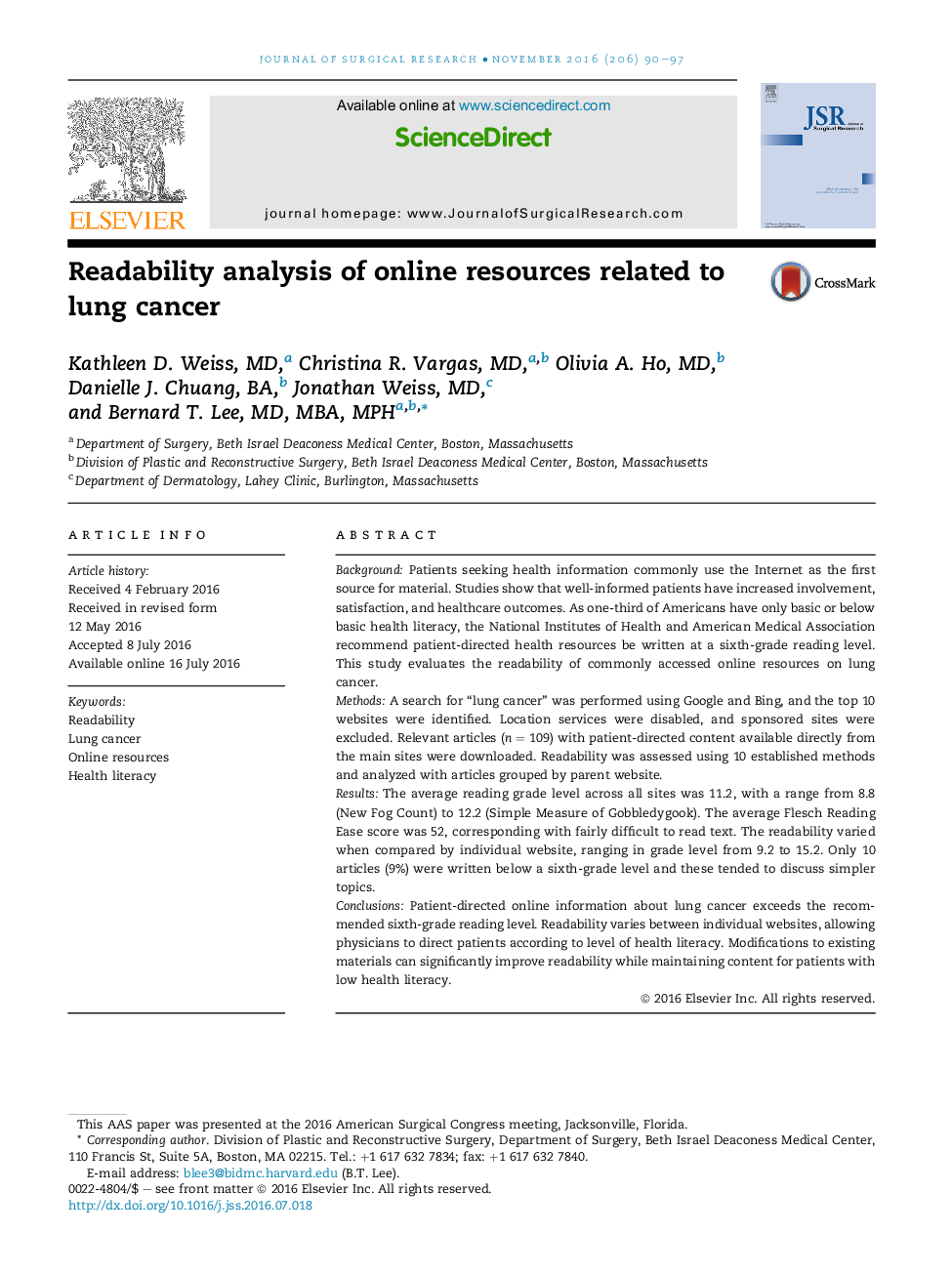| Article ID | Journal | Published Year | Pages | File Type |
|---|---|---|---|---|
| 4299091 | Journal of Surgical Research | 2016 | 8 Pages |
BackgroundPatients seeking health information commonly use the Internet as the first source for material. Studies show that well-informed patients have increased involvement, satisfaction, and healthcare outcomes. As one-third of Americans have only basic or below basic health literacy, the National Institutes of Health and American Medical Association recommend patient-directed health resources be written at a sixth-grade reading level. This study evaluates the readability of commonly accessed online resources on lung cancer.MethodsA search for “lung cancer” was performed using Google and Bing, and the top 10 websites were identified. Location services were disabled, and sponsored sites were excluded. Relevant articles (n = 109) with patient-directed content available directly from the main sites were downloaded. Readability was assessed using 10 established methods and analyzed with articles grouped by parent website.ResultsThe average reading grade level across all sites was 11.2, with a range from 8.8 (New Fog Count) to 12.2 (Simple Measure of Gobbledygook). The average Flesch Reading Ease score was 52, corresponding with fairly difficult to read text. The readability varied when compared by individual website, ranging in grade level from 9.2 to 15.2. Only 10 articles (9%) were written below a sixth-grade level and these tended to discuss simpler topics.ConclusionsPatient-directed online information about lung cancer exceeds the recommended sixth-grade reading level. Readability varies between individual websites, allowing physicians to direct patients according to level of health literacy. Modifications to existing materials can significantly improve readability while maintaining content for patients with low health literacy.
